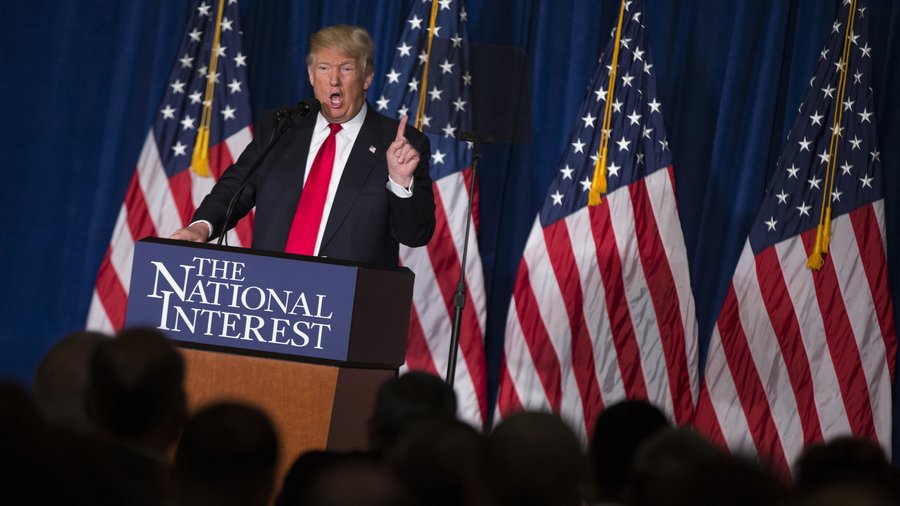
For all of the talk about Donald Trump’s outreach to black voters, it has been obvious from the outset that Trump’s real target in doing so — and in potentially softening his position on immigration — is the white voters he needs to compete in November.
Why? Let’s walk through it.
1. Trump’s weakness in the polls is a function of soft support from Republicans. This graph is from shortly after the party conventions, but the trend holds: Trump does worse among Republicans than Hillary Clinton does among Democrats, and that’s a lot of the reason he trails her in polling (at both the national and state level).
2. It’s women — particularly white women with college degrees — who are the source of that softness. From our most recent Post/ABC News poll, we get this chart, showing how that group continues to offer Trump lower levels of support than men, even though his support has ticked upward.
3. This is a big problem. Trump is getting blown out among nonwhite voters and needs to do well with white voters to win. But while Trump is overperforming with white men without college degrees relative to Mitt Romney’s performance in 2012, he’s doing far worse with white women with college degrees.
4. That problem is compounded by the fact that white men without degrees are less committed to vote than college-educated white women.
5. Ask white college-educated women how they feel about the prospect of a President Trump and more than three-quarters say it makes them anxious. More than half of that group within the Republican Party says the same thing.
6. So why do white women look at Trump so negatively? For one thing, they think he’s biased against women and nonwhites. More than half of white women with college degrees who are registered voters think Trump is very biased. More than a quarter of that group in the Republican Partysay he’s biased.
This is the reason for the new Trump outreach to black and Hispanic voters.
7. Trump’s problem isn’t only with college-educated white women. More than a quarter of college-educated white male Republicans and white Republican women think Clinton has the better temperament to serve as president. Among all registered voters, those groups are all at or above 50 percent for Clinton.
8. And bear in mind: This is only among white voters. White voters have been a bulwark of support for Republican candidates in past elections, even as the percent of the electorate that is white has declined. Pew Research estimates that the percent of the electorate that will be white in 2016 will be under 70 percent for the first time. Trump needs to do betterwith white voters to make up for the declining share of the electorate, but he’s doing worse.
And that, simply put, explains Trump’s recent shift in tone on the campaign trail.



Expositores: Oscar Vidarte (PUCP) Fernando González Vigil (Universidad del Pacífico) Inscripciones aquí. Leer más
Una retrospectiva para entender los próximos cuatro años. Leer más
En la conferencia se hará una presentación de los temas más relevantes del proceso de negociación se llevó a cabo desde el 2012, así como del acuerdo de paz firmado entre el Gobierno colombiano y la guerrilla de las FARC a finales del 2016. Se analizarán los desafíos y las... Leer más
El Observatorio de las Relaciones Peruano-Norteamericanas (ORPN) de la Universidad del Pacífico es un programa encargado de analizar y difundir información relevante sobre la situación política, económica y social de Estados Unidos y analizar, desde una perspectiva multidisciplinaria, su efecto en las relaciones bilaterales con el Perú.
© 2025 Universidad del Pacífico - Departamento Académico de Humanidades. Todos los derechos reservados.

